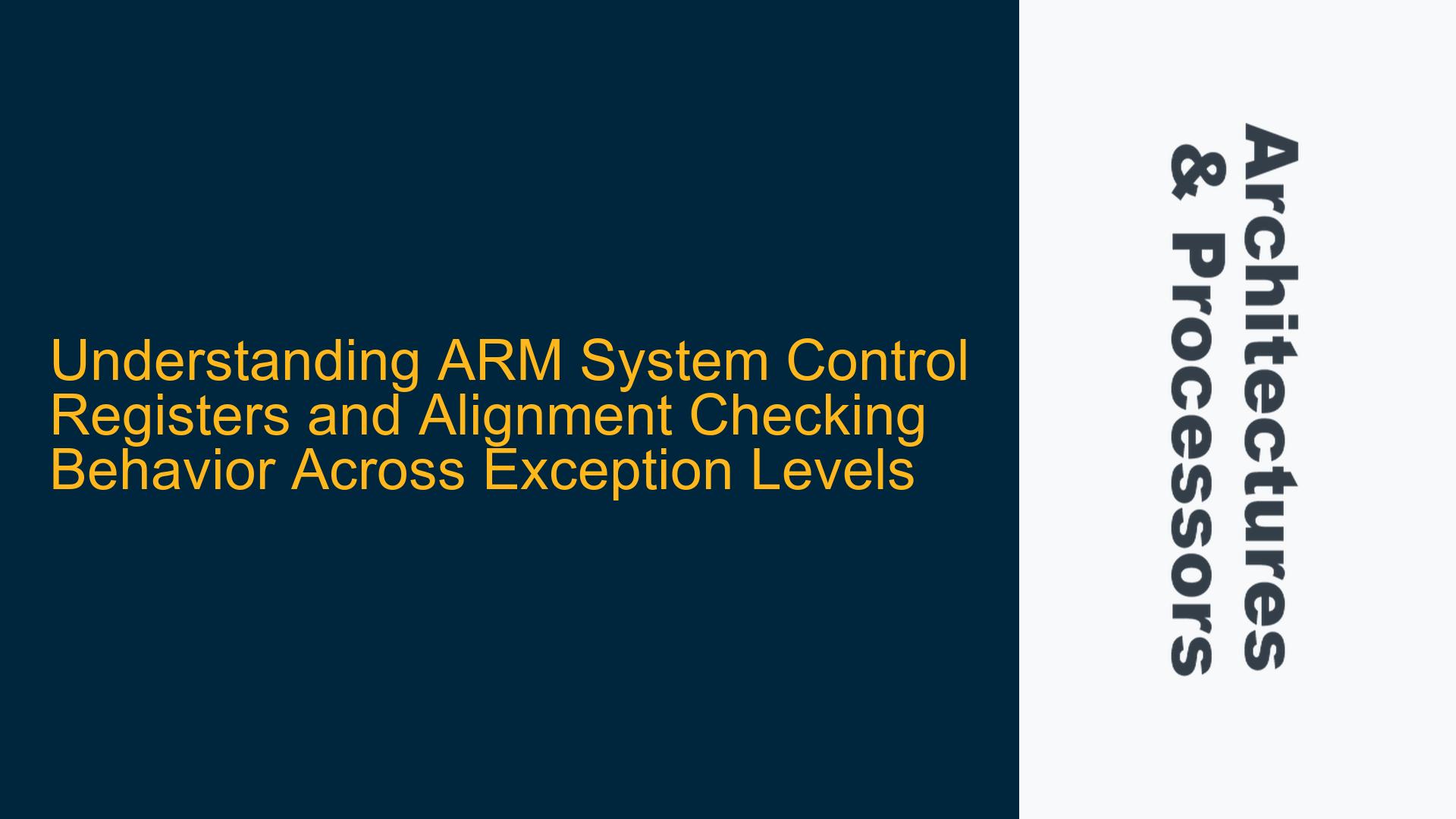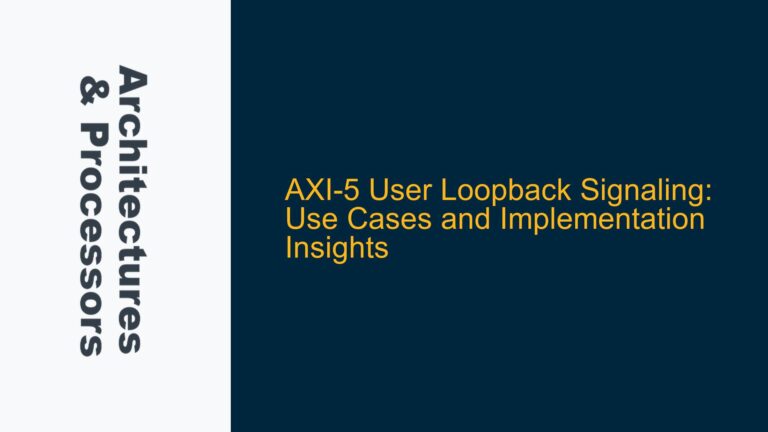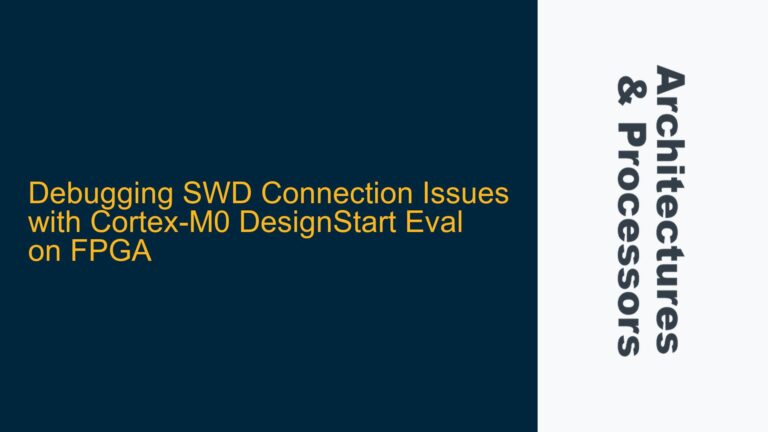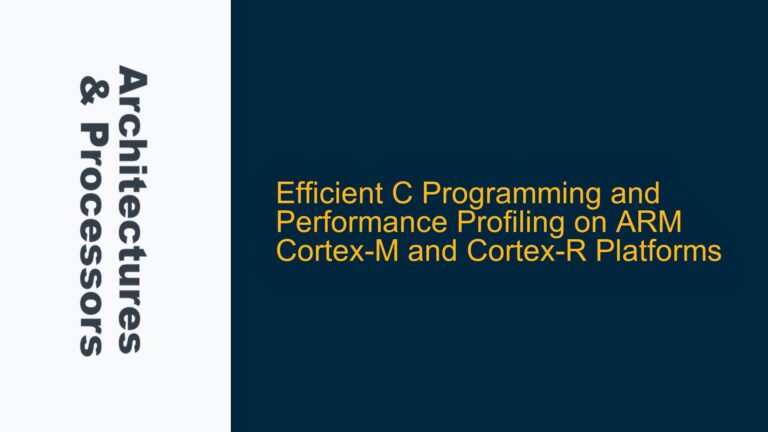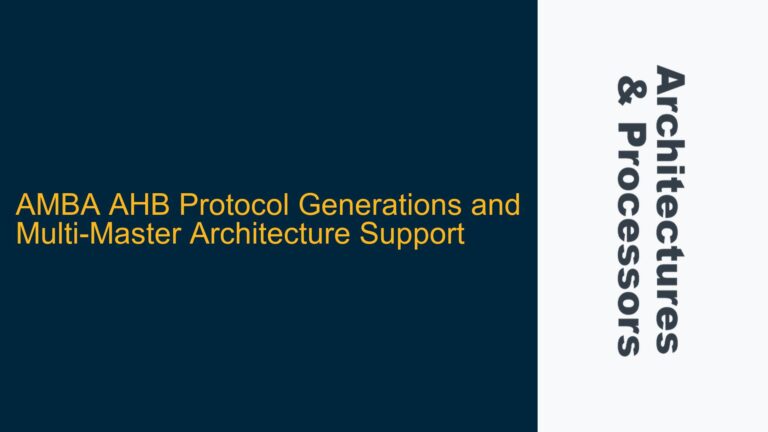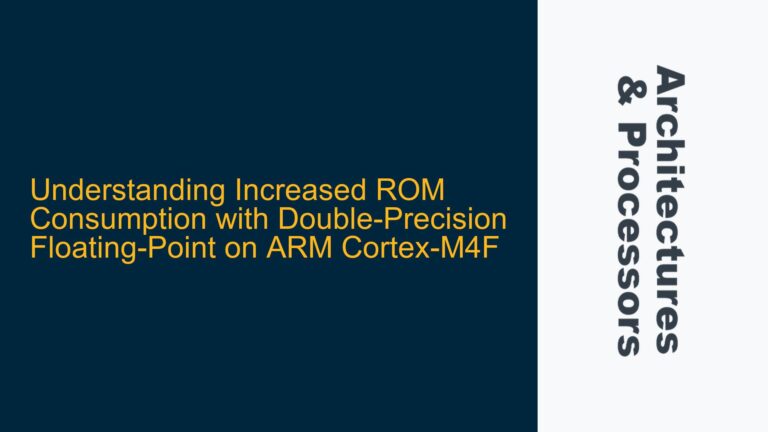ARM System Control Registers and Their Role in Alignment Checking
The ARM architecture, particularly in its ARMv8-A implementation, employs a hierarchical system of control registers to manage various aspects of processor behavior. Among these, the System Control Registers (SCTLR) play a pivotal role in configuring system-level features, including memory management, cache behavior, and alignment checking. The SCTLR exists in multiple instances, each associated with a specific Exception Level (EL): SCTLR_EL1 for EL1, SCTLR_EL2 for EL2, and SCTLR_EL3 for EL3. These registers are independent and control the behavior of the processor when operating at their respective exception levels.
One of the critical bits in the SCTLR is the A bit, which governs strict alignment checking. When the A bit is set, the processor enforces strict alignment for memory accesses. This means that any attempt to access memory at an unaligned address will result in an alignment fault. Conversely, when the A bit is cleared, the processor may handle unaligned accesses, either by performing multiple aligned accesses or by using hardware support for unaligned accesses, depending on the implementation.
The behavior of the A bit is context-dependent, meaning it is influenced by the current Exception Level and the configuration of the corresponding SCTLR. For instance, SCTLR_EL1.A controls alignment checking for both EL0 (user mode) and EL1 (operating system kernel mode). Similarly, SCTLR_EL2.A and SCTLR_EL3.A control alignment checking for EL2 (hypervisor) and EL3 (secure monitor) respectively. This separation allows different software layers to enforce their own alignment policies independently.
Implications of Misconfigured Alignment Checking Across Exception Levels
The independence of the A bit across different SCTLR instances can lead to subtle issues, particularly when software running at one Exception Level assumes a certain alignment policy that differs from the configuration at another Exception Level. For example, if SCTLR_EL1.A is set (enforcing strict alignment) but SCTLR_EL2.A is cleared (allowing unaligned accesses), a hypervisor running at EL2 might perform unaligned memory accesses without generating faults, while the operating system running at EL1 would encounter alignment faults for the same accesses. This discrepancy can cause unexpected behavior, especially in systems where software at different Exception Levels interacts closely, such as in virtualized environments.
Another scenario involves the inability of lower Exception Levels to access or modify the SCTLR settings of higher Exception Levels. For instance, EL1 cannot read or modify SCTLR_EL2 or SCTLR_EL3. This restriction is by design, as higher Exception Levels typically manage more privileged operations and must maintain control over their configuration. However, this can complicate debugging and system configuration, as software at lower Exception Levels may not have visibility into the alignment policies enforced at higher levels.
Diagnosing and Resolving Alignment Checking Issues in ARM Systems
To diagnose alignment checking issues, it is essential to first determine the current configuration of the A bit in the relevant SCTLR registers. This can be done by reading the SCTLR values at each Exception Level. For example, a hypervisor running at EL2 can read SCTLR_EL1 to determine the alignment policy for EL1 and EL0. However, software at EL1 cannot directly read SCTLR_EL2 or SCTLR_EL3, so it must rely on documented behavior or higher-level APIs to infer these settings.
If alignment faults are occurring unexpectedly, the first step is to verify the A bit settings in the SCTLR registers for the Exception Levels involved. If the A bit is set at a lower Exception Level but cleared at a higher level, this could explain why certain unaligned accesses are faulting while others are not. In such cases, the alignment policy should be harmonized across Exception Levels to ensure consistent behavior.
For systems where alignment policies must differ between Exception Levels, careful design is required to avoid conflicts. For example, a hypervisor might enforce strict alignment checking at EL2 to catch potential bugs in its own code, while allowing the operating system at EL1 to disable alignment checking for performance reasons. In this case, the hypervisor must ensure that any unaligned accesses it performs are handled appropriately, either by using software workarounds or by leveraging hardware support for unaligned accesses.
In some cases, it may be necessary to modify the A bit dynamically during runtime. This can be achieved using privileged instructions to write to the SCTLR. However, care must be taken to ensure that such modifications do not introduce race conditions or other synchronization issues. For example, if an operating system running at EL1 disables alignment checking while a hypervisor at EL2 is performing a critical operation that assumes strict alignment, this could lead to unpredictable behavior.
To summarize, alignment checking in ARM systems is governed by the A bit in the SCTLR registers, with each Exception Level having its own independent configuration. Misconfigurations or mismatches in alignment policies across Exception Levels can lead to subtle and hard-to-debug issues. By carefully diagnosing the current configuration, harmonizing alignment policies where possible, and designing systems to handle differing policies gracefully, developers can avoid these pitfalls and ensure robust system behavior.
Practical Steps for Managing Alignment Checking in ARM Systems
To effectively manage alignment checking in ARM systems, developers should follow a structured approach that includes configuration verification, policy harmonization, and runtime management. Below are detailed steps to address alignment checking issues:
Step 1: Verify SCTLR Configuration at All Relevant Exception Levels
The first step in diagnosing alignment checking issues is to verify the current configuration of the SCTLR registers at all relevant Exception Levels. This involves reading the SCTLR values and checking the state of the A bit. For example, to check the alignment policy at EL1 and EL0, software running at EL1 can read SCTLR_EL1. Similarly, a hypervisor running at EL2 can read SCTLR_EL1 to determine the alignment policy for EL1 and EL0, and SCTLR_EL2 to check its own alignment policy.
If alignment faults are occurring unexpectedly, compare the A bit settings across Exception Levels to identify any discrepancies. For instance, if SCTLR_EL1.A is set but SCTLR_EL2.A is cleared, this could explain why certain unaligned accesses are faulting while others are not.
Step 2: Harmonize Alignment Policies Across Exception Levels
If discrepancies in alignment policies are identified, the next step is to harmonize these policies across Exception Levels. This may involve modifying the A bit in the relevant SCTLR registers to ensure consistent behavior. For example, if a hypervisor at EL2 enforces strict alignment checking but the operating system at EL1 does not, consider setting SCTLR_EL1.A to match the hypervisor’s policy.
In cases where alignment policies must differ between Exception Levels, ensure that software at each level is designed to handle these differences gracefully. For example, a hypervisor might enforce strict alignment checking at EL2 to catch potential bugs in its own code, while allowing the operating system at EL1 to disable alignment checking for performance reasons. In this case, the hypervisor must ensure that any unaligned accesses it performs are handled appropriately, either by using software workarounds or by leveraging hardware support for unaligned accesses.
Step 3: Implement Runtime Management of Alignment Checking
In some scenarios, it may be necessary to modify the A bit dynamically during runtime. This can be achieved using privileged instructions to write to the SCTLR. However, care must be taken to ensure that such modifications do not introduce race conditions or other synchronization issues. For example, if an operating system running at EL1 disables alignment checking while a hypervisor at EL2 is performing a critical operation that assumes strict alignment, this could lead to unpredictable behavior.
To safely modify the A bit at runtime, consider the following best practices:
- Use Atomic Operations: Ensure that modifications to the SCTLR are performed atomically to avoid race conditions. This may involve disabling interrupts or using other synchronization mechanisms.
- Document Alignment Policies: Clearly document the alignment policies for each Exception Level and ensure that all software components adhere to these policies.
- Test Thoroughly: Thoroughly test any changes to alignment checking policies to ensure that they do not introduce new issues or regressions.
Step 4: Leverage Hardware Features for Unaligned Accesses
Modern ARM processors often include hardware support for unaligned memory accesses, which can help mitigate the performance impact of strict alignment checking. If alignment checking is disabled (A bit cleared), the processor may handle unaligned accesses more efficiently, either by performing multiple aligned accesses or by using dedicated hardware support.
When designing software for ARM systems, consider leveraging these hardware features to improve performance while maintaining robust alignment checking policies. For example, a hypervisor might disable alignment checking at EL2 to take advantage of hardware support for unaligned accesses, while still enforcing strict alignment checking at EL1 to catch potential bugs in the operating system.
Step 5: Debug and Diagnose Alignment Faults
When alignment faults occur, it is essential to have robust debugging and diagnostic tools in place to identify the root cause. This may involve using hardware debuggers, trace tools, or software-based diagnostics to capture the state of the system at the time of the fault.
Key steps for debugging alignment faults include:
- Capture Fault Context: When an alignment fault occurs, capture the context of the fault, including the faulting address, the current Exception Level, and the state of the SCTLR registers.
- Analyze Faulting Code: Analyze the code that caused the fault to determine whether the access was intentionally unaligned or the result of a bug.
- Review Alignment Policies: Review the alignment policies for all relevant Exception Levels to ensure that they are consistent and appropriate for the system’s requirements.
By following these steps, developers can effectively manage alignment checking in ARM systems, ensuring robust and predictable behavior across all Exception Levels.
Conclusion
Alignment checking in ARM systems is a critical aspect of system configuration, governed by the A bit in the SCTLR registers. The independence of these registers across Exception Levels allows for flexible configuration but also introduces the potential for misconfigurations and inconsistencies. By carefully verifying SCTLR settings, harmonizing alignment policies, and implementing robust runtime management, developers can avoid alignment-related issues and ensure the reliable operation of their systems. Additionally, leveraging hardware features for unaligned accesses and employing thorough debugging practices can further enhance system performance and stability.
